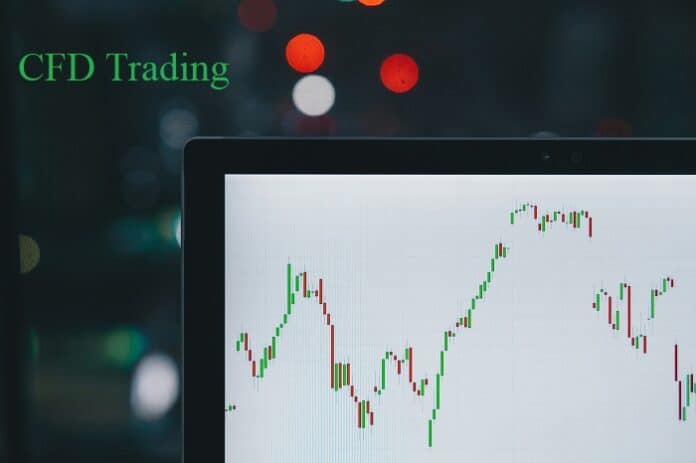Definition of CFD trading
Entering a contract between a trader and a broker is the essence of CFD trading. The contract’s foundation is the price difference between an asset’s value at opening and closing times. You are thus speculating on the price movement of the item rather than purchasing or selling it itself. Stocks, indices, currencies, and commodities are just a few of the financial products CFDs allow one to trade.
CFD trading essentially lets traders buy when they anticipate the price of the asset rising or sell when they think the price will drop.
For traders wanting to earn in both rising and declining markets, CFD trading is a flexible tool because of its adaptability.
How does CFD trading operate?
Once one knows the fundamental mechanics, CFD trading is really simple. Trading CFDs results in a position on a particular asset. You profit if the price runs in the direction you expected. Should things go against you, you lose something.
For a condensed form, consider this:
- You buy a CFD for a stock because you think its price will rise.
- Should the price of the stock climb, you can sell the CFD at a higher price. Profit would be the difference between your entry price and the sale price.
- Should the price drop, you can close your trade to reduce losses—the difference between the entry price and the current price.
Usually in CFD trading, brokers let traders employ leverage, therefore increasing both possible gains and possible losses. Leverage allows you to control a bigger position using a somewhat small cash quantity.
Main Characteristics of CFD Trading
Leverage is one of the most important features of CFD trading. Leverage lets traders open positions bigger than their initial outlay. For a leverage ratio of 10:1, for instance, you can control $10 worth of an asset for every $1 you invest. Leverage should, nevertheless, also cause losses. So, it is imperative to employ it sensibly.
If you’re wondering what is CFD trading, it involves trading on leverage, meaning opening a position only requires a percentage of the total deal value. This initial deposit is called the margin. While leverage increases market exposure, it also means that if the market moves against you, losses could exceed your initial deposit.
CFD trading lets you earn from both upward and negative price changes, unlike conventional trading in which gains come from increasing prices. Should you anticipate a drop in the value of an asset, you can short-sell CFDs and maybe profit from the price drop.
Trading CFDs leaves you without owning the asset you are trading. You are therefore trading on the price movement of the item. This helps to simplify the expenses and complexity involved in actually owning commodities or stocks.
CFD Trading’s Advantages
For traders of all stripes, CFD trading presents a number of advantages that draw appeal. These include:
- From stocks and currency to commodities and indices, all from a single trading platform, CFDs let you trade a great spectrum of markets.
- CFD trading gives more flexibility by allowing traders to go long or short, thereby helping them to profit from both rising and declining markets.
- CFD trading is usually a more affordable approach since you are not claiming ownership of the underlying asset, thereby avoiding taxes such as stamp duty.
- As was already noted, leverage helps traders open larger, less capital-dependent bets. It should be utilized carefully even if this raises possible rewards as it also raises risk.
CFD Trading’s Risks
Like any financial instrument, CFD trading carries hazards. Therefore, it is imperative to know these before beginning.
- Leverage Risk: Although it increases earnings, leverage can also intensify losses. If traders carelessly handle their risk management, they may lose more than just their original amount.
- Markets can be erratic, hence unexpected price swings can cause large losses — particularly in margin trading.
- Margin Calls: Your broker might call you if your position swings against you and your account balance drops below a specific level. You would then have to add more money to keep your position.
Starting Trading CFDs: How?
Starting with CFD trading calls for several important actions:
- Select a trustworthy broker. Make sure you choose a respectable regulated broker. Search for brokers providing a user-friendly platform, reasonable spreads, and a large spectrum of markets.
- Once you have a broker selected, open a trading account. Many brokers provide demo accounts so you may test CFD trading without running actual risk.
- Create a strong trading plan first before you begin trading with actual money. This ought to cover your profit goals, risk control guidelines, and trading plan.
- Starting small and progressively increasing your exposure as you grow more at ease with the platform and market dynamics helps you first start trading CFDs.
Without owning the underlying assets, CFD trading provides a flexible and easily available approach to trade on several financial markets. Given leverage and the possibility to profit from both rising and declining markets, CFD trading has become rather popular. It is important to grasp, nevertheless, the advantages as well as the hazards. Your chances of success in the CFD market will rise if you use sensible risk management and have a well-considered trading plan.
CFD trading presents great chances regardless of your level of experience as a trader, nevertheless, it also depends on a strong knowledge and disciplined approach to properly negotiate its risks.





